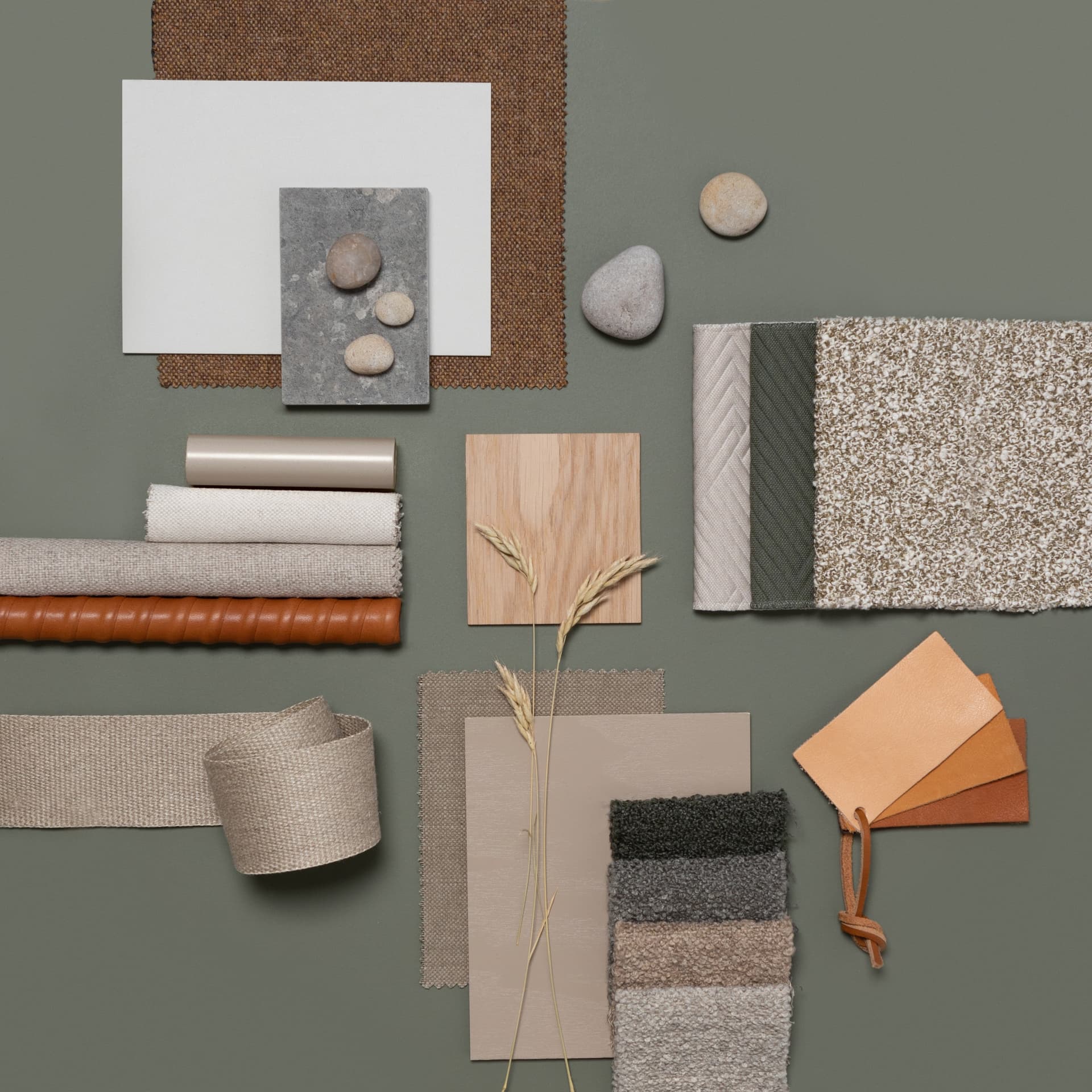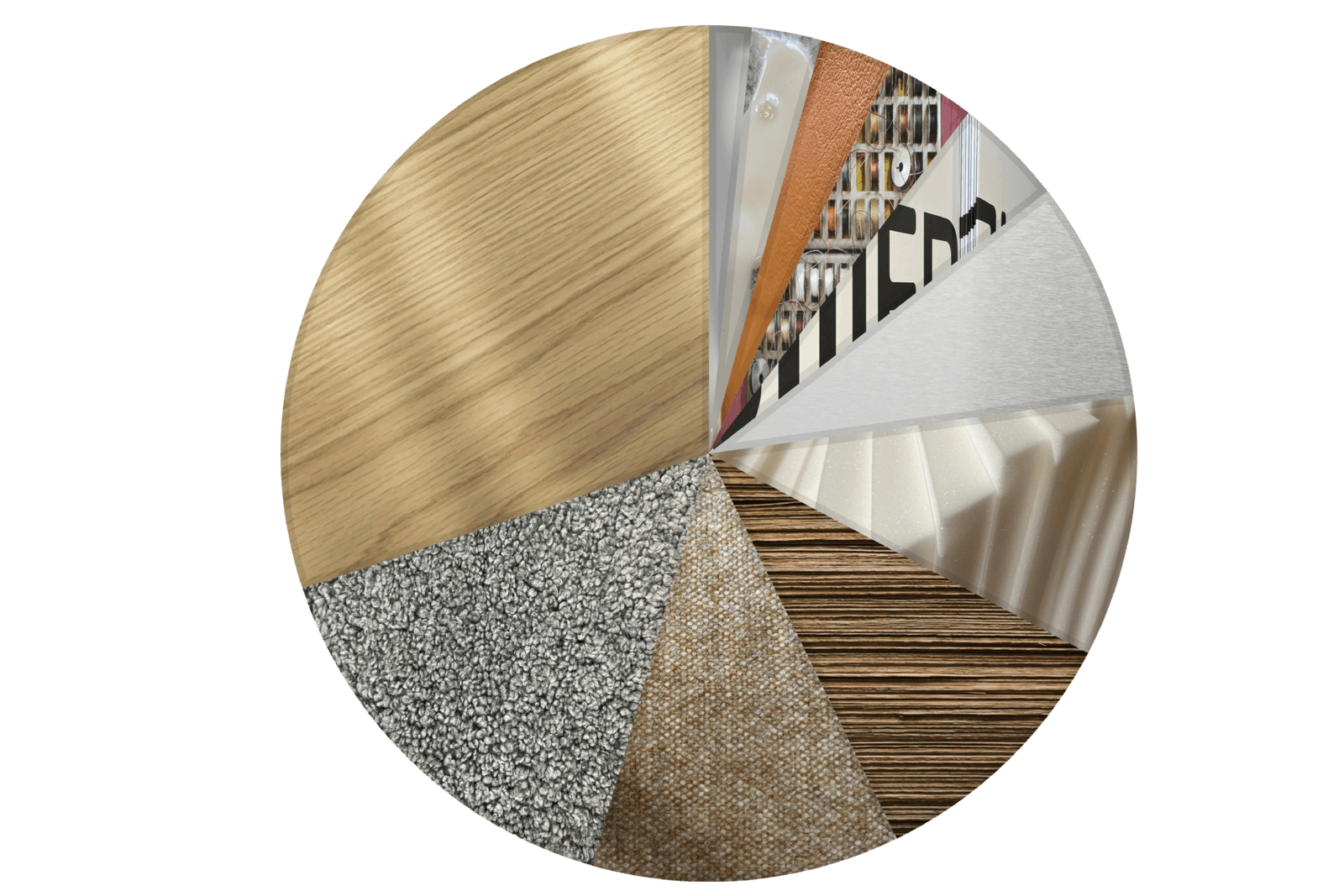Our most commonly used materials
Pure and sustainable materials

We continuously explore new materials and methods to design long-lasting furniture. Among all the materials we purchase, wood — in the form of solid components and veneer — represents the largest share.
We continuously explore new materials and methods to design long-lasting furniture. One way to develop both ourselves and our customers is by creating environmental product declarations, known as EPDs. These serve as proof of a product’s total carbon footprint. In 2024, we produced EPDs for five products. The purpose of developing these is to increase understanding of how material choices and design impact the environment — but also to help us learn and refine our own design and product development processes.
Wood, our most frequently used material, has a low carbon footprint. Among all the materials we purchase, wood — in the form of solid components and veneer — represents the largest share. Today, 96% of the wood materials we purchase are certified according to FSC or PEFC standards, and our goal is to reach 100% by 2026.

WOOD – 40%
Wood is our most commonly used material. We use it in the form of solid wood components and veneer. Our beech and oak veneers come from northern Germany, while our birch is sourced from Finland and ash from the Czech Republic. Currently, there are no sawmills in Sweden that handle rotary-cut veneer. Since 2013, our own production has used certified wood sourced from responsibly managed forests in accordance with FSC or PEFC standards. The share of certified wood has fluctuated between 96–98% over the years. Wood components include elements such as sofa frames and legs, as well as fully finished wooden products from our subcontractors.
SHEEPSKIN – 15%
All sheepskins are by-products of meat and wool production. A smaller portion comes from Swedish Gotland sheep, while the majority originates from Australia and New Zealand. To ensure that ethical and sustainable animal welfare standards are maintained, our subcontractors conduct regular visits to their partners.
FABRIC – 12%
Our main fabric suppliers are based in Europe. The raw materials consist primarily of wool and recycled polyester. We actively work to avoid materials containing biocides and encourage our customers to choose fabrics certified with either the EU Ecolabel or Oeko-Tex.
POLYETHER – 10%
Polyether is used for furniture padding and can be either cut foam (e.g. sofa cushions) or molded foam (used in models such as Stella, Amstelle, and Pillo). Molded foam from our suppliers BPI and Letbæck includes a share of Biomass — comparable to green electricity — where around 15% of the polyether is derived from food waste. Polyether containing Biomass accounts for about 30% of our total polyether purchases, measured by purchase value.
STEEL – 8%
Steel and metal are primarily used in the bases of sofas, armchairs, and tables. Most of our suppliers are located in Småland, and we mainly use Swedish steel from SSAB.
PACKAGING – 4%
Our packaging materials consist of FSC-certified corrugated cardboard. The packaging is used for finished products, wooden crates, and pallets for transport. We design our packaging to optimize transport volumes and minimize damage during shipping.
ADHESIVE – 3%
Adhesives are used in the form-pressing of veneers, and for bonding polyether to wooden frames or sheepskin to fabric. We have worked systematically to replace traditional adhesives with water-based alternatives containing low levels of formaldehyde. Since 2014, we have used water-based adhesives for frame assembly, and since 2016, formaldehyde-free adhesives for veneer pressing.
LACQUER – 3%
We use lacquer for finishing wooden products. Our lacquers are now almost entirely water-based. By 2025, our goal is to completely phase out acid-cured products from our regular assortment, using only water-based alternatives. Currently, the ratio is 90% water-based to 10% solvent-based lacquer. Exceptions are made only when solvent-based products are specifically requested for high-wear environments or areas requiring frequent disinfection, such as hospitals and restaurants.
LEATHER – 3%
Leather is used less and less, primarily for public environments. We source 98% of our leather from Swedish suppliers Elmo and Tärnsjö, both of which uphold high environmental standards.
ALUMINUM – 2%
Aluminum is used in the bases of armchairs and consists of 97% recycled material.
OTHER MATERIALS – 3%
This category includes a mix of smaller components such as fasteners, sewing thread, casters, plastic sleeves, and mirror glass.


